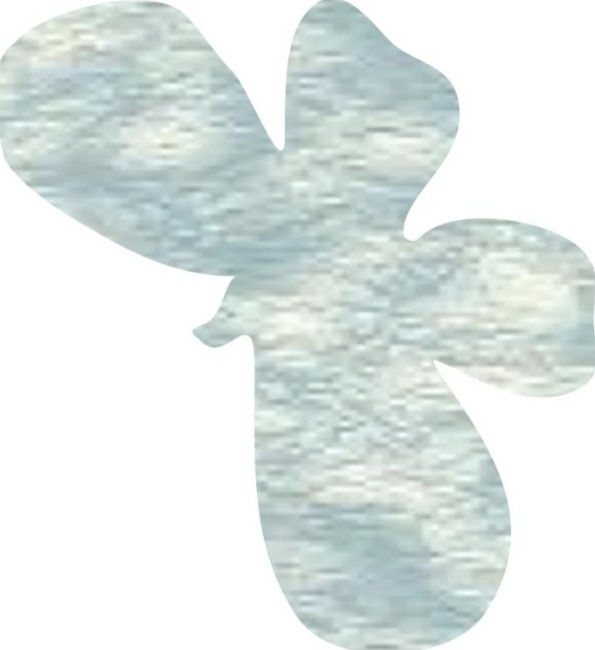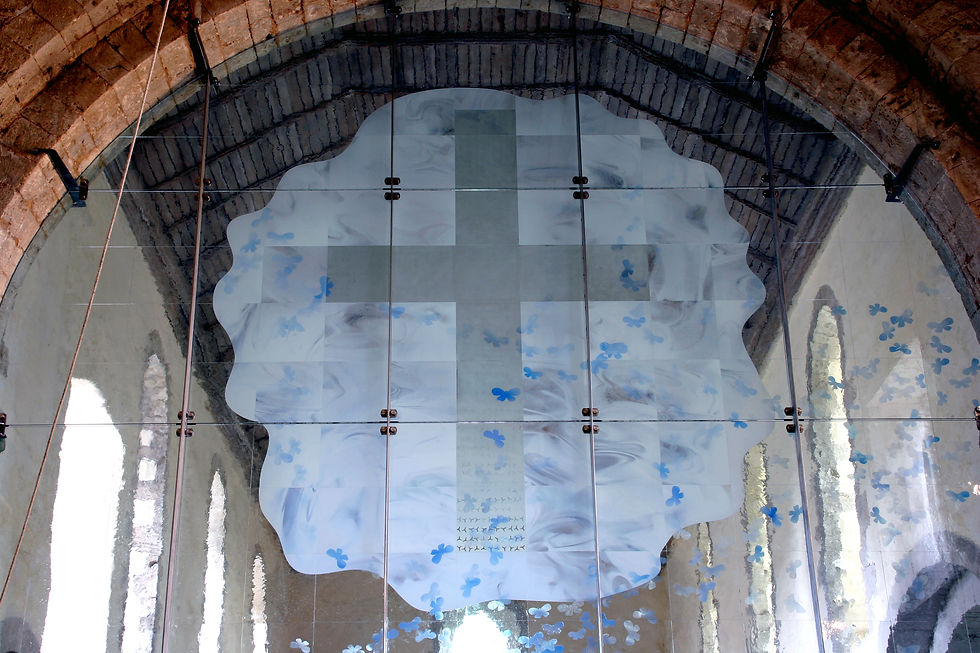From Friday!
- rhianprime

- Apr 18, 2020
- 4 min read
I was most grateful when Philip Morris kindly resent his input to me yesterday in a more user friendly form for my limited IT abilities! Read this in conjunction with yesterday's post.This is important information as we think about butterflies and the Church's understanding of them. Thank you Philip.

Extract from a sermon preached in Ewenny Priory Church, Easter Sunday 2006, by the Venerable Philip Morris, Archdeacon of Margam and Priest in charge of Ewenny and St Brides Major.
Alexander Beleschenko’s design for the Pulpitum Screen at Ewenny Priory is a very powerful symbol of the Resurrection. The Cross that confronts worshippers at the Priory as they look up at the Screen is not the Cross of Suffering but the Cross of Victory, set in clouds of glory. The Cross as “death of death and hell’s destruction”; all the powers of darkness, of treachery, of pride, of fanaticism, put Jesus to death on the Cross, and they thought they had triumphed over him, but Christ rose in glory and conquered them all. This is the Cross of St John’s Gospel, where the final cry is not, as in the other Gospels, one of desolation, but instead a great cry of triumph – “It is finished!” “It is fulfilled!”
There would always have been a representation of the Crucifixion above the Screen which divided the people’s part of the church from the monastic. It would have been in the form of the traditional rood – the cross with a suffering Christ, Our Lady and St John either side. But it is only in the later Middle Ages, from the 12th century onwards, that such a representation appeared in Christian art. In early Christian and Celtic art, the Cross is usually depicted as being empty; in the Orthodox Churches of today, the same. If there is a representation of Christ, it is of Christ the King, with no sagging body, no sign of wounds – the Christus Majestas, Christ in Majesty, that we find in Epstein’s sculpture in Llandaff Cathedral.
It is the Cross as the symbol of victory that is found in the hymns of the early Church:
“Sing my tongue, the glorious battle,
sing the last, the dread affray;
o’er the cross the victor’s trophy,
sound the high triumphal lay;
How the pains of death enduring,
earth’s redeemer won the day.” (6th century)
The early hymn that comes to mind as we look up at the Cross on the Screen is another by the 6th century Bishop Venantius Fortunatus:
“The royal banners forward go,
the cross shines forth in mystic glow.”
Bishop Venantius wrote that hymn while a student at Ravenna University, and he would have gazed on the Cross in shimmering mosaic set high up in the apse of Church of San Appolinare in Classe. It certainly inspired him to write some of our finest Passion and Easter hymns.
So the Cross on the Pulpitum Screen is a symbol of the Resurrection of Christ – the butterflies flowing, flying out of the Cross, is a symbol of the Resurrection of the Christian, the new life flowing out of what happened on Good Friday and Easter Day.
There are what seem to be butterflies carved on some of the columns of the nave of San Appolinare in Classe; however butterflies are not common in early Christian art, though they were the symbol of the soul in Greek culture, and found in Minoan art. Artists from the Renaissance period and later have incorporated the butterfly as a symbol in Christian art; it frequently appears on Victorian gravestones; and is found in much modern church stained glass.
Its not difficult to see the butterfly as a symbol of the life-cycle of the Christian. The caterpillar stage is the natural earthly life; the chrysalis is the death of the body; the butterfly emerging is the soul’s Resurrection into eternal life. Like the beautiful butterfly's release from its dark chrysalis stage into freedom, so we can also look forward to our resurrection, our freedom from earth's trials into new life with God for ever. Our mortal life on earth will be forever changed to immortality.
Elisabeth Kübler-Ross was a psychiatrist who worked in the hospice movement. In one of her books, she tells of travelling through post-war Europe to help rebuild clinics. She visited the Maidanek concentration camp in Poland. When she got to the children's dormitories, the scene was particularly heartbreaking, with toys and shoes strewn about, but there was something else, too. The walls were covered with hundreds of butterflies, scratched and etched with fingernails and pebbles. The children knew they were going to die and were leaving a message of hope. Elisabeth Kübler-Ross wrote in her book The Wheel of Life, A Memoir of Living and Dying
“They knew that soon they would become butterflies. Once dead, they would be out of that hellish place. Not tortured anymore. Not separated from their families. Not sent to gas chambers. None of this gruesome life mattered anymore. Soon they would leave their bodies the way a butterfly leaves its cocoon. And I realized that was the message they wanted to leave for future generations. It also provided the imagery that I would use for the rest of my career to explain the process of death and dying.
When we have done all the work we were sent to do,
we are allowed to shed our bodies,
which imprisons our soul like a cocoon encloses the butterfly
and when the time is right we can let go of it.
Then we will be free of pain, free of fears and free of worries--
free as a beautiful butterfly returning home to God....”
And that is the message of the Resurrection.
.




Comments